HERO or GOAT – The Difference Is?
With another Baseball season getting under way, the question that is almost never on the minds of sports columnists, analysts, and fans is, “Who’s going to bat .400 this year?” Everyone except the “most imaginative” seeker of a proven “Batting Principle” will agree that it is unlikely (if not impossible) that any batter of the modern era would be capable of changing his “mind-set” in order to determine a new and practical approach to “Batting Excellence.”
What is the difference between a .200 hitter (1 for 5) and a .400 hitter (2 for 5)? The simple and obvious answer, to the “superficial” observer, is 1 hit! Except, of course, if they batted 10 times. Then, it’s 2 hits (2 for 10; 4 for 10)then(3 for 15; 6 for 15). It’s starts getting complicated as each batter compiles an additional 5 at-bats. It would seem relatively easy to sustain a “clip” of 1 hit every 5 times at-bat. Does it seem outlandish to imagine the prospect of getting 2 hits in every 5 at-bats?
What does anyone actually know about a .400 hitter? Has anyone actually seen one in our generation? 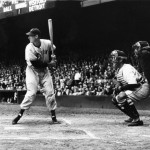 Ted Williams, in 1941, was the last batter to reach that high level of consistent hitting for a whole season. We’ve seen quite a few .200 hitters; they seem to be rather plentiful! Can the .400 hitter be easily distinguishable from the .200 hitter? Again, it’s hard to say. We have little verification that the prospect of another one could really exist. (It’s like “Big-foot”; people who say they’ve seen him give compatible descriptions as to what he could look like!) Some back-woods “bush-leagues” have probably come the closest to producing a legitimate prototype
Ted Williams, in 1941, was the last batter to reach that high level of consistent hitting for a whole season. We’ve seen quite a few .200 hitters; they seem to be rather plentiful! Can the .400 hitter be easily distinguishable from the .200 hitter? Again, it’s hard to say. We have little verification that the prospect of another one could really exist. (It’s like “Big-foot”; people who say they’ve seen him give compatible descriptions as to what he could look like!) Some back-woods “bush-leagues” have probably come the closest to producing a legitimate prototype 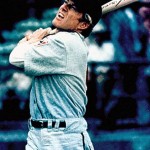 , but never actually authenticated the “Genuine-Article” for practical use in the Big-Leagues.
, but never actually authenticated the “Genuine-Article” for practical use in the Big-Leagues. (I know that Aaron Pointer batted .401 for the Salisbury Braves in Salisbury, North Carolina in 1961 while playing in the Western Carolina League.)
(I know that Aaron Pointer batted .401 for the Salisbury Braves in Salisbury, North Carolina in 1961 while playing in the Western Carolina League.)
While devising the basic formula that would produce an ideal hitter, the prospect for a solution to the problem of inefficient bats-man-ship lay in the degree to which the batter is consistently able to apply the proper mechanics to his swing. It has been established over many years of observation, and finally deduced, that one’s high degree of athleticism is not the major factor in producing the best hitting credentials. The ability to devise (detect), interpret, and apply the proper mechanics to the swing is the major determinant in establishing a credible batting prowess.
The main ingredients to establishing the proper mechanics are these: secure stance, visual stability, minimum stride, and quick compact swing.
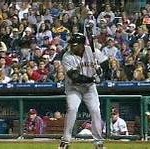
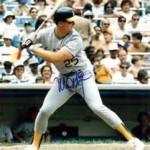
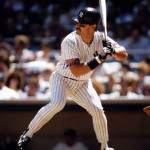 A secure stance implies that the batter has postured himself in a most foundationally advantageous position from which to clearly detect the pitcher’s release of the ball, as well provide a strong, functional mobility with which the body can react quickly to respond effectively and appropriately to the speed, flight pattern and nuances of the pitched ball.
A secure stance implies that the batter has postured himself in a most foundationally advantageous position from which to clearly detect the pitcher’s release of the ball, as well provide a strong, functional mobility with which the body can react quickly to respond effectively and appropriately to the speed, flight pattern and nuances of the pitched ball.
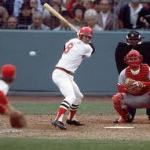
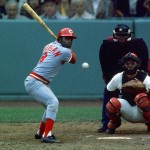
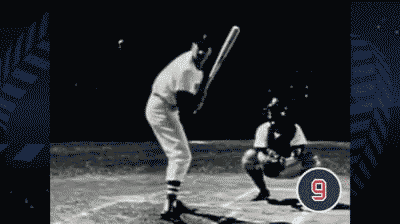 Visual stability infers that, from a secure stance, the head of the batter will maintain a constant position, from the point that the pitcher releases the ball, through the torque of the swing, and during and after the follow-through, to assure that the eyes retain maximum acuity for proper and consistent focus on the target.
Visual stability infers that, from a secure stance, the head of the batter will maintain a constant position, from the point that the pitcher releases the ball, through the torque of the swing, and during and after the follow-through, to assure that the eyes retain maximum acuity for proper and consistent focus on the target.
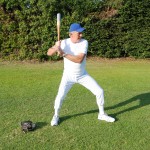
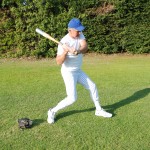
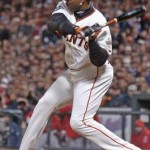
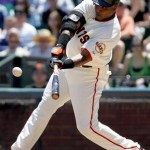 Minimum stride refers to the least amount of preliminary movement necessary for the batter to facilitate preparatory body momentum to effect a quick and powerful response to the pitched ball. Remembering that optimal visual acuity is essential to effective hitting, and that ultimate power is activated not by predisposed linear movement, the most efficient use of the stride would logically be to take no stride at all.
Minimum stride refers to the least amount of preliminary movement necessary for the batter to facilitate preparatory body momentum to effect a quick and powerful response to the pitched ball. Remembering that optimal visual acuity is essential to effective hitting, and that ultimate power is activated not by predisposed linear movement, the most efficient use of the stride would logically be to take no stride at all.
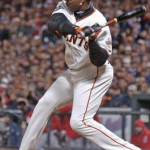
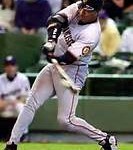

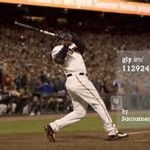 A quick compact swing is one in which the minimum of time is elapsed after the front foot has been securely planted and the batter initiates and completes the turn of the hips and shoulders, with the arms and bat following in rapid succession with the minimum of ostensible drag. A point to always remember is that the lower the center of gravity the quicker and more powerful will be the turn of hips and shoulders.
A quick compact swing is one in which the minimum of time is elapsed after the front foot has been securely planted and the batter initiates and completes the turn of the hips and shoulders, with the arms and bat following in rapid succession with the minimum of ostensible drag. A point to always remember is that the lower the center of gravity the quicker and more powerful will be the turn of hips and shoulders.
These four aspects of proper mechanics constitute what would be considered a sound physical approach to applying oneself to the prospective “art” of hitting a baseball. If you have watched professional ballplayers taking batting practice before the game, you might have observed that they all seemed to look the same, as they blasted away at moderately fast moving batting practice pitches.
Their stances seemed secure, knees bent slightly for effective balance. They hit every pitch, so they must have seen the ball clearly. They appeared calm and in control; minimum of extraneous movement—lunging at the ball. And most were demonstrating quick powerful strokes that carried the ball into the bleachers. Batting practice is always an awesome spectacle to behold! After watching such a display you might think that any or every one of those batters could be a .400 hitter. And why can’t they be?
On every Big-League team there is probably to be found at least one .300 hitter and a range of hitters from the high .200s to the low .200s. But no one batting .400 (except during an uncustomary prolific first month, or so). Is there an actual scientific reason for a player to be a .400 or better hitter in batting practice, and a .200 hitter in games? And, is there a scientific rationale for that .400 batting practice hitter to apply to his game-condition, that would allow him to maintain that .400 “stroke” throughout the season?
To answer the first question, no really scientific explanation is necessary. Professional players are good, strong athletes with great hand eye coordination. A batting practice pitcher elicits no fear at all. And the sense of confidence that exudes when fear is not present, plus the one-dimensional component to hitting accurately thrown, moderate fastballs, have a tendency to induce a player to exhibit the fulfillment of highest physical potential. Unfortunately, the mental approach, for many of these physically endowed batting practice participants, is merely a pre-game physical exercise to loosen their bodies for the real-live performance.
At game time, you might notice a formerly relaxed and confident “Bleacher-Blaster” now exhibiting body language that expresses a less than authoritative approach to addressing the preeminent “mounds-man.” As he nervously swaggers his bat to and fro, the batter anxiously tries to regain the comfort-pose he postured, with nonchalance, during B.P. Somehow his confidence has sunk below anticipation level while facing the disdainfully insensitive eyes of a formidable (alien) pitcher. The semi-taut muscles that provided ample support for slightly bent but fluidly mobile knee joints, during Batting Practice, suddenly stiffened inexplicably, to accommodate an immediate need for improved stability.
The first 93 MPH fastball caught his reflexes just a tad “in arrears,” as his bat-speed languished in 85mph range, and sent a poorly calibrated foul-ball to the off-side of the back-stop. A demeanor that implied untold gratitude for even touching the speeding projectile precluded an ominous prediction about the success of his subsequent attempts. Needless to say, a brilliant sequence of masterfully placed pitches sent the batter back to his dugout, after “His Eminence” concluded the series with an off-speed breaking pitch that had the high gliding bats-man lunging out, over his front foot, and whiffing at a ball whose bottom half seemed to disintegrate before his disconcerting, dangling eyeballs.
The preceding experience could have happened. In fact, it has happened, many times. And, it will happen again, because the common baseball player mentality is geared to think and act in accordance to how something Feels, not how intellectually and mechanically correct a proposition is.
Baseball players tend to oblige themselves to the notion that “practice-makes-perfect.” They try to avoid the complete axiom that “perfect practice-makes-perfect,” because, in most cases, to do the intelligently and mechanically correct thing “doesn’t feel good.”
Most professionals will agree that a secure stance, visual stability, minimum stride, and a quick compact swing are essential ingredients to obtaining an optimal range of hitting proficiency. However, many factors influence one’s interpretation of how to apply these components to the individual temperament and physical makeup of every player.
To what extent is a secure stance vindicated by the varying degrees of bent-knees to maintain a low center of gravity? Can optimal visual stability be perfected in a batter who insists on maintaining a high stance and excessive stride, or even a modest stride? Can a player who doesn’t stride generate enough quickness and torque from the mere rotary action of hips and shoulders (initiated by the correct knee action) to elicit formidable power to express his swing to its maximum extent?
Individual physical characteristics of each player obviously have to be taken into consideration before anyone can prescribe the most beneficial interpretation for use of the main physical ingredients to successful “Batting.” A great cook does not put the same amount of salt and pepper into a pot of stew when feeding himself, as he does when he’s catering a banquet! (And here, Yogi might say he’s not going to any banquet where all they’re serving is stew.) A short bow-legged player may not have to crouch as low as a tall, straight-legged player to facilitate an equivalent of speed and torque during the power-turn of hips and shoulders. But a taller player would have to bend his knees more to establish an equivalent strike zone to a shorter player.
Most ballplayers think that a batting average of .400 and above is impossible, so the probability of their reaching that level is negligible, if not impossible. Even if they ascribed to the precept that “thought precedes action,” they would still have to contend with a list of preconceived notions that would stifle any consistent progress they could make along sound intellectual and mechanical lines. The greatest deterrent to ultimate batting progress is the reluctance of any hitter within the .250 to .300 range to change any aspect of his swing that could possibly further reduce his presently respectable average.
A batter’s average throughout the second half of the season is determined by how well the pitcher can keep his pitches within the areas, in and outside the strike-zone, that the particular batters will either swing at errantly or cannot hit easily. If a batter has flaws in his mechanics (as well as in his mental approach to discerning the pitcher’s intent), scouting reports will generally identify the symptoms of such, and good pitchers will attempt to sabotage all vestiges of prior success due to misplaced pitches.
Is there a way to make the “hitting-game” easy to apply, and to genuinely extrapolate from a logical, rational, and orderly set of hypotheses a character whose special mental and physical talents would legitimize a .400 or better hitting phenomenon? The answer to that question is Yes!
The next .400, or better, hitter will be a batter who confidently walks to the plate with the understanding that the pitcher is tenaciously going to attempt to throw the baseball passed him. He realizes that the pitcher will be standing on a mound that is almost a foot above the plane of home plate. He intelligently deduces that the flight of the ball will be descending toward the plate at a speed varying from 70 to 100 MPH. He is conscious of the fact that the ball, after travelling a distance of more than 50 feet, will have to traverse the length of an 18inch wide home plate while maintaining a height range varying with the degree to which the batter’s knees and chest are separated by measure.
And, he does not have to go out and attack the ball. The ball will come to him. With patience, he will let it arrive into his zone, then quickly and efficiently dispose of it—if he prepares himself properly. 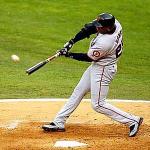
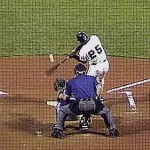
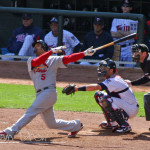
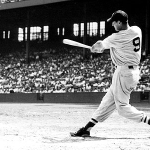
While fully apprised of the physical parameters and logistics of pitcher-batter inter-play, in order to counteract all of the menacing tactics of an astute and finely tuned prestidigitator of mounds-man-ship, the .400 hitter will have to demonstrate near impeccable application of sound mechanics. He must also deprive his opponent of any additional advantage, to which the predominant pitcher has been previously accustomed.
To establish maximum stability and optimal viewing, the .400 hitter assumes a stance as low as will accommodate a minimum of discomfort. From this position, he not only will facilitate the most stable foundation from which to elicit the fastest possible reaction time to any assortment of pitched balls, but will also considerably diminish the area to which the umpire can define as a strike for the pitcher. Thus, the pitcher’s workload becomes a bit more excessive. (Score 1 for the .400 hitter).
If the batter’s stance is low, and spread to the extent of what would be the distance of his stride, his stable position better prepares him to view the incoming pitch. The distance between a high or low pitch is now so negligible that the batter will have less difficulty adjusting to the pitcher’s choice of location, presenting the additional conundrum for any team’s pitching staff. Therefore any “strike” is in the batter “wheel-house.” The pitcher no longer has that deceptive leverage-point that he had grown accustomed to with the batter in a high stance. (Score 2 for the .400 hitter).
Everything, to this point, has been for the purpose of more than adequately preparing the batter to effectively encounter what the pitcher has to offer. Now, the moment of application of mechanically precise engineering, which really attests the difference between the .400 and .200 hitters, comes into play. With stance secure, and vision stabilized, the pre- conditioned, natural sequential flow of body parts, choreographed to the rhythm of the whistling ball in flight, begins with a “gathering” of energy, shifting the weight slightly, not backward to disturb balance, but inwardly to secure balance. 
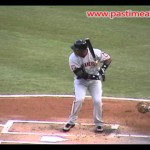 As the coiled body awaits the incoming pitch, the hands and bat have moved to a position slightly beyond the back shoulder, facilitated by the lowering front shoulder and turning body. At the critical point, where the ball has been identified for its speed and/or specialized nuances, the body responds with the first wave of conscious forward movement, which occurs simultaneously in four distinct areas.
As the coiled body awaits the incoming pitch, the hands and bat have moved to a position slightly beyond the back shoulder, facilitated by the lowering front shoulder and turning body. At the critical point, where the ball has been identified for its speed and/or specialized nuances, the body responds with the first wave of conscious forward movement, which occurs simultaneously in four distinct areas.
If all functions are intact, and the timing mechanism accurately assessed, the front foot plants firmly as its knee begins to straighten. The three other areas, acting synergistically, are the back bent knee, and the front and back shoulders.
As the front knee is straightening, the front hip is turning outwardly and backward, while the back knee is twisting forward and down, to assist the rapidly forward-turning back hip. The front shoulder begins its assault with an initial “shrug,” the purpose of which is multi-faceted: to stabilize and abruptly lift the shoulder, instigate the initial lowering of back shoulder and elbow, and provide momentum for initiating the complete turn of the upper body through the swing.
After the quick action of the “shrug,” the front shoulder continues on its route until its completion at the back end of the swing.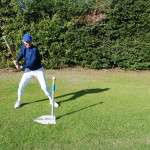
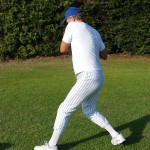
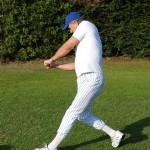
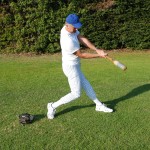
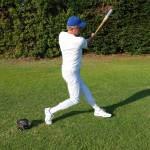

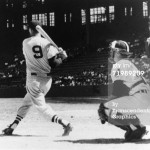 The beauty of being aware of the four simultaneous steps is that any one of them can be the conscious stimulant to initiate the batter’s swing. It is impossible to think of all four at the same time—too complex an endeavor. But just knowing that they all occur at the same time allows the .400 hitter to focus on any one, which seems most suitable at the time, and receive a successful result.
The beauty of being aware of the four simultaneous steps is that any one of them can be the conscious stimulant to initiate the batter’s swing. It is impossible to think of all four at the same time—too complex an endeavor. But just knowing that they all occur at the same time allows the .400 hitter to focus on any one, which seems most suitable at the time, and receive a successful result.
Since the .400 hitter knows that every pitched ball is travelling in a descending line, or arc, his body mechanics instinctively facilitates the corresponding action of the bat to meet the ball on a line as close to 180 degrees as possible. The action described above (the four steps) allows the bat to begin flattening out automatically as the swing is initiated, and thus avoiding any time lapse that is induced by unnecessary conscious effort.
As the swing progresses, the diametrical shoulder slant assists the front arm’s straightening, and lowered back shoulder and bent elbow to drive the hands and bat to striking area. Once the “belly-button” faces the pitcher, the front elbow snaps its arm to extension while the back elbow starts its subsequent powerful extension, for the bat to contact the ball.
As the bat meets the ball, the shoulders remain the continuing power force that drives the arms and hands to direct the bat through the ball until the follow-through is complete. (If the fingers of the top hand were extended at the “contact” point, one would notice that the palm is facing upward, to assure that the wrists had not rolled over.)
The angle of the swing of the bat of the .400 hitter does not correspond with the parallel level of the playing field, but rather on a parallel line with the flight of the ball. 
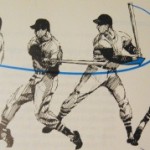
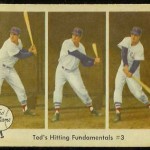
 To swing the bat, on a parallel line with the field level, at a ball that is travelling downward from a height of 5 to 6 feet, would facilitate a hard ground ball in a majority of cases, if solid contact were made.
To swing the bat, on a parallel line with the field level, at a ball that is travelling downward from a height of 5 to 6 feet, would facilitate a hard ground ball in a majority of cases, if solid contact were made.
Because solid contact, 100% of the time, is improbable, you might be able detect, here, one of the flawed characteristics that makes for a .200 hitter. The most detrimental component to any aspiring .400 (or even .300) hitter is the erroneous theory that the batter should swing down on the ball. And the prospective .400 hitter who follows the sequence of body mechanics mentioned above will never swing down on the ball, unless he is ostensibly late with his timing, or if he prematurely rolls his wrists over the ball at contact!
Is there any chance that a batter will again hit .400 or better? There are many current players who are hitting .300 consistently. Anyone of them could be a .400 hitter, if he knew for sure that there was a legitimate way to become that Hero, without the prospect for also being a Goat. He has to be willing to try something different, even though it may not, at first, feel good.
Coming Soon: The “Good-Hitter” and The “Great-Hitter”.
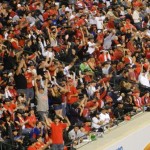




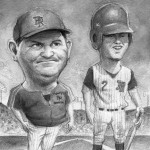

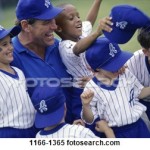

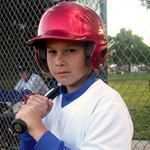
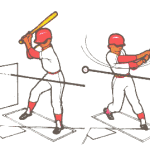
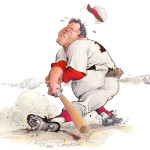
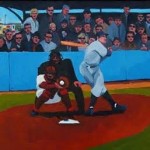
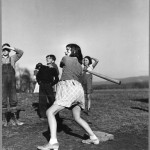
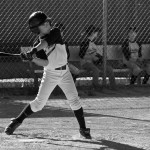
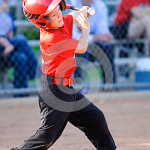
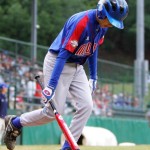
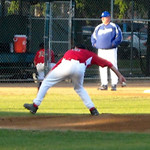

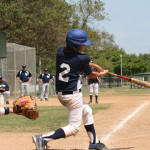
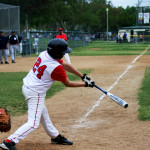
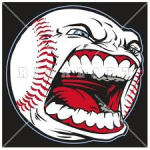
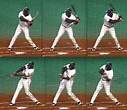
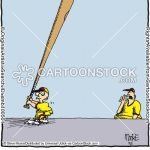 Pretending to pitch the ball, then hitting the pretend ball, then running the (real) 90 foot bases, sliding into 2nd, 3rd, and home bases.
Pretending to pitch the ball, then hitting the pretend ball, then running the (real) 90 foot bases, sliding into 2nd, 3rd, and home bases. 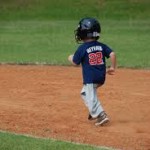 He would usually continue this exuberant activity for my entire game. And it wouldn’t be uncommon to observe the people in “our” stands looking over the guard railing onto the adjacent field watching the antics of a remarkable young baseball prospect in the initial stages of his long baseball career.
He would usually continue this exuberant activity for my entire game. And it wouldn’t be uncommon to observe the people in “our” stands looking over the guard railing onto the adjacent field watching the antics of a remarkable young baseball prospect in the initial stages of his long baseball career.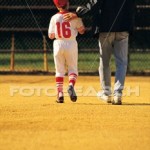
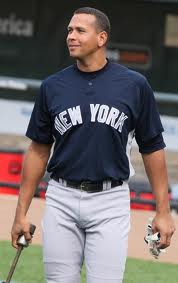
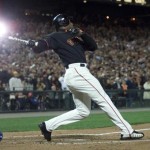
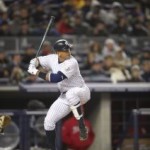 He lifts his front foot high off the ground while he waits in “suspended animation” to detect the speed, direction, and nuances being delivered by the pitch before he abruptly lunges forward and down to plant the foot to begin the swing. If the plant is too early, he’s out in front of the pitch and loses much of his power. If he is late with the plant, the fast ball is by him.
He lifts his front foot high off the ground while he waits in “suspended animation” to detect the speed, direction, and nuances being delivered by the pitch before he abruptly lunges forward and down to plant the foot to begin the swing. If the plant is too early, he’s out in front of the pitch and loses much of his power. If he is late with the plant, the fast ball is by him.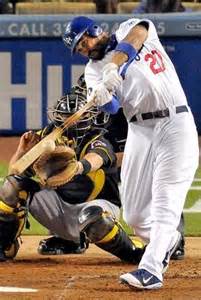




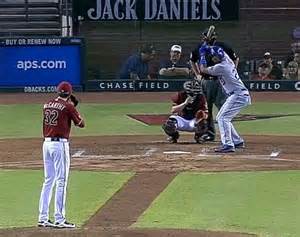
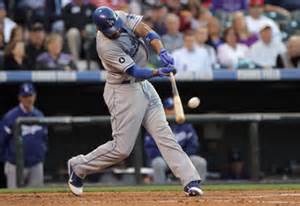 .
.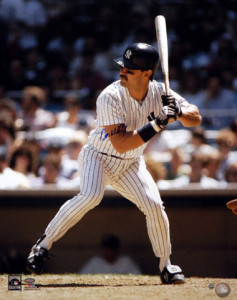
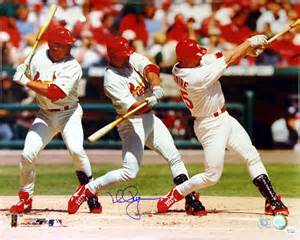
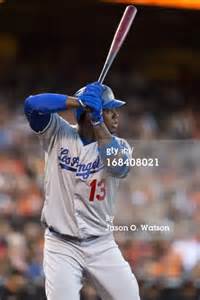
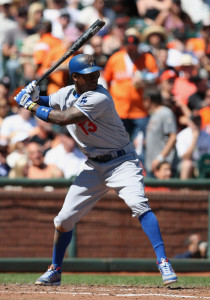
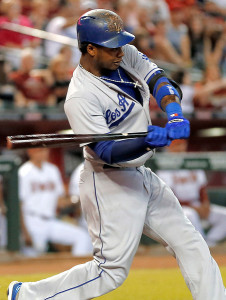
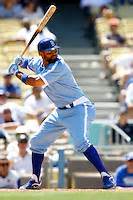
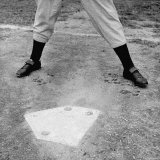
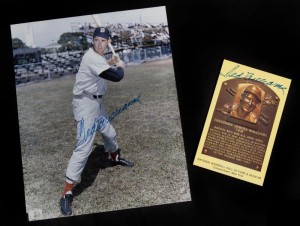 and
and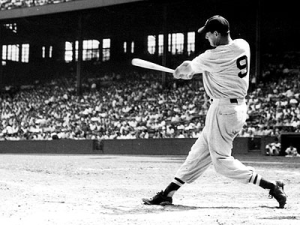
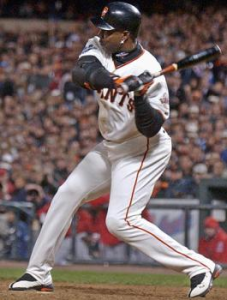


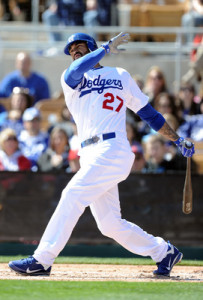
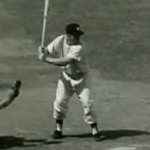
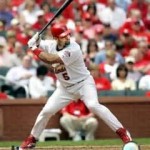
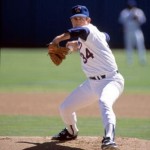
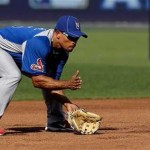
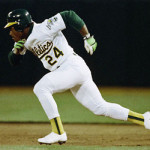
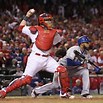
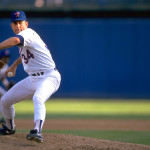
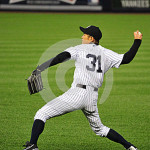
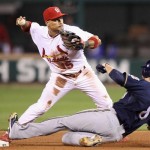
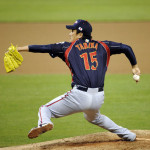
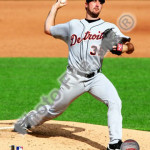
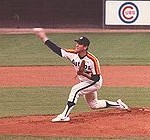
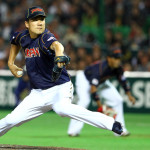
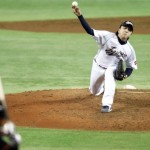
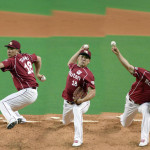
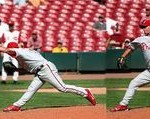
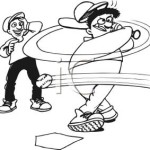
 creates a large and easy strike zone for the pitcher, as well as proposes a line of vision for the batter’s eyes that transcends countless horizontal planes in following the flight of the ball to the plate
creates a large and easy strike zone for the pitcher, as well as proposes a line of vision for the batter’s eyes that transcends countless horizontal planes in following the flight of the ball to the plate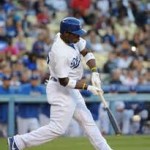 . The eyes that will see the pitched ball most clearly are those that come as closely as possible to the level of the ball in flight
. The eyes that will see the pitched ball most clearly are those that come as closely as possible to the level of the ball in flight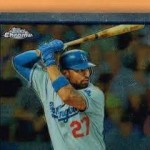 , he unwittingly has created for himself a high center-of-gravity, which for all practical purposes diminishes the leverage by which the maximum speed of the body can be facilitated in turning the hips and shoulders. A low stance, with bat and hands at the level of highest strike, facilitate the fastest body action(Joe Morgan – above).
, he unwittingly has created for himself a high center-of-gravity, which for all practical purposes diminishes the leverage by which the maximum speed of the body can be facilitated in turning the hips and shoulders. A low stance, with bat and hands at the level of highest strike, facilitate the fastest body action(Joe Morgan – above). because it tends to force the batter to stride toward the plate and therefore makes him vulnerable to hard inside pitches. Because the stride itself is moving the body, along with head and eyes, the movement toward the plate compounds the distortion aspect of the moving pitch.
because it tends to force the batter to stride toward the plate and therefore makes him vulnerable to hard inside pitches. Because the stride itself is moving the body, along with head and eyes, the movement toward the plate compounds the distortion aspect of the moving pitch.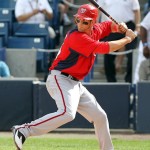 It becomes counterproductive to optimal visual acuity, as the head and eyes move also. If the hips move forward with the stride, the integrity of the swing itself is compromised by the dislocation of the body’s “vertical axis.” Maximum power is impossible to generate while the vertical axis is not constant. The “high-leg-kick”
It becomes counterproductive to optimal visual acuity, as the head and eyes move also. If the hips move forward with the stride, the integrity of the swing itself is compromised by the dislocation of the body’s “vertical axis.” Maximum power is impossible to generate while the vertical axis is not constant. The “high-leg-kick” , the bat and ball will meet as the palm of the top-hand is facing upward
, the bat and ball will meet as the palm of the top-hand is facing upward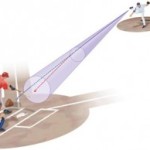
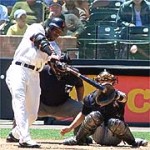

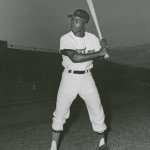 Joe Morgan,
Joe Morgan, 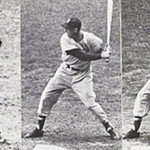 Ted Williams,
Ted Williams, 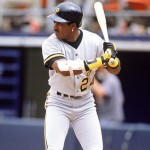

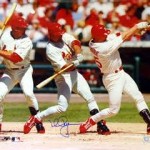
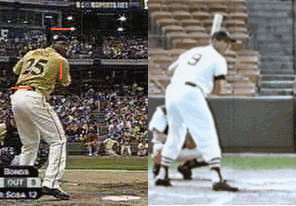
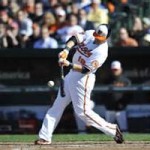

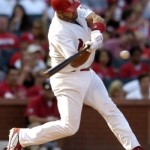
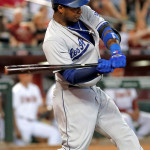
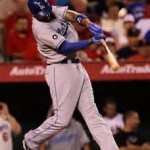
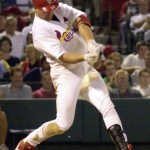
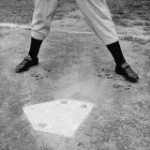
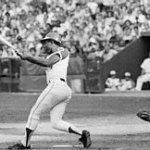
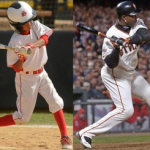 . And, what better way for a youngster to find the right form or technique than to copy the batting stance and swing of his favorite Major League Player?
. And, what better way for a youngster to find the right form or technique than to copy the batting stance and swing of his favorite Major League Player?
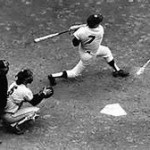 , Yogi Berra, Joe DiMaggio, Lou Gerrig, Al Kaline, Dick McCaullif, Norm Cash, Rocky Collivito, Willy Mays, Hank Aaron, Duke Snider, and others.
, Yogi Berra, Joe DiMaggio, Lou Gerrig, Al Kaline, Dick McCaullif, Norm Cash, Rocky Collivito, Willy Mays, Hank Aaron, Duke Snider, and others.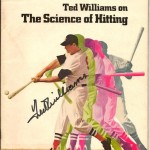 constituted a precise manner for which to hit a baseball most efficiently was revolutionary for his time. But, in the aftermath of his great and successful career, he attained many ardent followers, But few were able to understand and duplicate his relevant and practical theories, and their applications.
constituted a precise manner for which to hit a baseball most efficiently was revolutionary for his time. But, in the aftermath of his great and successful career, he attained many ardent followers, But few were able to understand and duplicate his relevant and practical theories, and their applications. The “Premier Pitching Principle” leaves most modern batters at a loss for productive bats-man-ship. But what the “modern batsmen” fail to realize is that there is a Principle for Batting that would supersede the predominance that the “modern pitcher” seems to have acquired.
The “Premier Pitching Principle” leaves most modern batters at a loss for productive bats-man-ship. But what the “modern batsmen” fail to realize is that there is a Principle for Batting that would supersede the predominance that the “modern pitcher” seems to have acquired.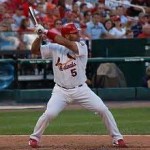
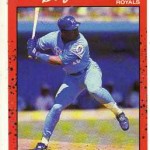
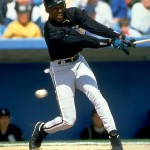 Then why would someone (like myself) have the audacity to declare that “Batting-Efficiency is a Simple Process”?
Then why would someone (like myself) have the audacity to declare that “Batting-Efficiency is a Simple Process”?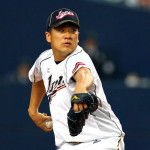
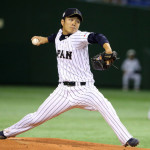 Whoever it is that is perpetuating the imperfect batting-mechanics of the distant past should start thinking “outside the box,” like whoever it is/was that was the vanguard for the innovative thinking that produced the likes of Masahiro Tanaka, Takahiro Norimoto, and others who have become the new standard for Pitching Excellence. (Maybe some fortunate Japanese pitching aspirant wandered into the instructional Pitching Camp of Resident Arizona Pitching Guru, Dick Mills, and learned a few things about Pitching Conditioning and Mechanics!)
Whoever it is that is perpetuating the imperfect batting-mechanics of the distant past should start thinking “outside the box,” like whoever it is/was that was the vanguard for the innovative thinking that produced the likes of Masahiro Tanaka, Takahiro Norimoto, and others who have become the new standard for Pitching Excellence. (Maybe some fortunate Japanese pitching aspirant wandered into the instructional Pitching Camp of Resident Arizona Pitching Guru, Dick Mills, and learned a few things about Pitching Conditioning and Mechanics!)